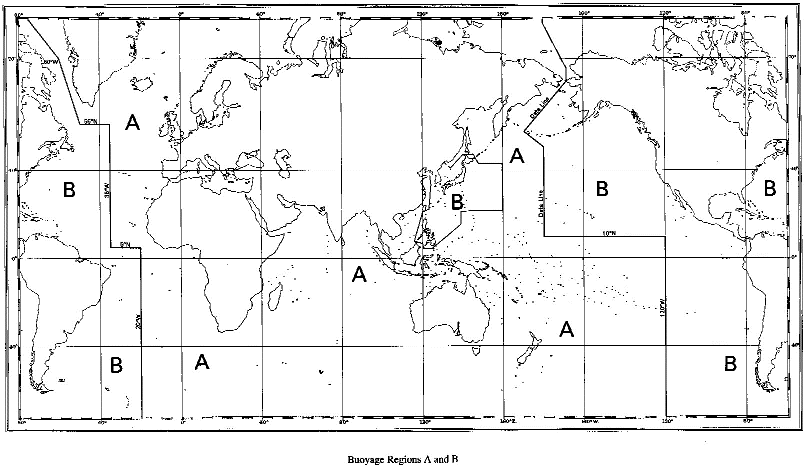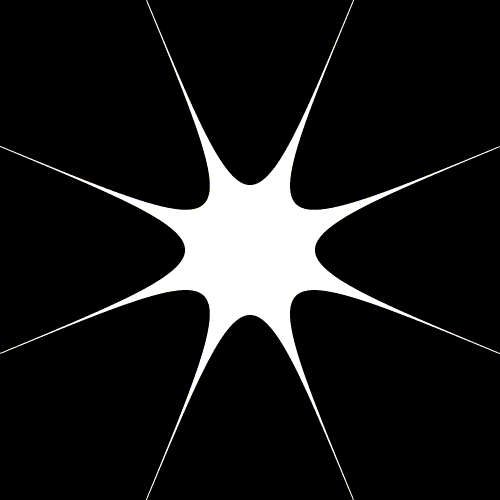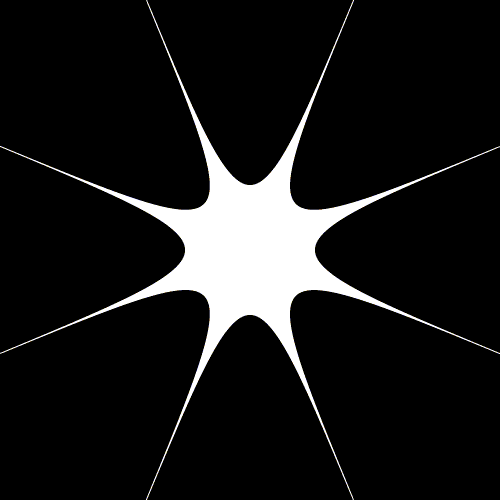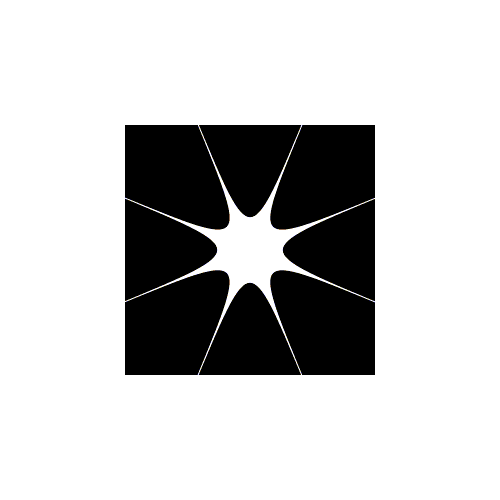
The International Association of Lighthouse Attendants (IALA) has approved an internationally system of buoyage that marks navigational hazards and keeps shipping in safe channels. When you are assessed, you will need to recognise one or more features of a mark and choose the correct action to take. There are 6 features of a mark that you will be tested on and they are:
There are 5 types of marks:
There are two versions of the IALA Buoyage system - A and B, and they apply in different regions of the world. The difference applies only to the way lateral marks are colored, which is opposite in the two regions.

Before a danger can be permanently marked and publicised, it may be marked with a lateral or cardinal mark. Two marks are often used, in case the temporary mooring parts. It is also easier to see.
A range of light characteristics exist so that we can distinguish between various lighthouses, beacons and buoys.
There are a range of colours:
|
|
If there is no colour shown on a chart, the colour is white.
Directional lights are abbreviated as 'DIR.', and may have three narrow beams of different colored light that indicate direction. For example, Dir. RWG means you should follow the white light, and if you can see red or green you have strayed off course.
Rhythm is also used to tell the difference between types of lights and the same types of lights when they are close together. The number of flashes often increases in sequence over a string of lights.
| Al.WR |
ALTERNATING : a light which alters in colour (e.g. white, red) in successive flashes or eclipses. |
 |
 |
| F |
FIXED : a continuous steady light. For example, FR means a fixed red light. |
 |
 |
| FI |
FLASHING : single brilliant flash at regular intervals. For example, Fl 5s means one flash every 5 seconds. Duration of light always less than the period of darkness. |
 |
 |
| FFI |
FIXED AND FLASHING : a steady light and one flash at regular Intervals. |
 |
 |
| Fl( ) |
GROUP FLASHING : two or more flashes in succession at regular intervals. For example, Fl(3) 10s means 3 flashes in succession within a period of 10 seconds. |
 |
 |
| Fl(2+1) |
COMPOSITE GROUP FLASHING: e.g. two flashes in succession followed by one flash at regular intervals. |
 |
 |
| Oc |
OCCULTING : steady light with a total eclipse at regular intervals. Duration of darkness is less than that of light. |
 |
 |
| Oc( ) |
GROUP OCCULTING : two or more eclipses in a group at regular Intervals. |
 |
 |
| Q |
QUICK FLASHING : continuous flashing at the rate of 50 or 60 per minute. |
 |
 |
| IQ |
INTERRUPTED QUICK FLASHING: flashing in groups of 50 or 60 times per minute with a total eclipse at regular intervals. |
 |
 |
| Q( ) |
GROUP QUICK FLASHING: two or more quick flashes in a group at regular intervals. For example, Q(3) 10s means a group of 3 quick flashes within a 10 second period. |
 |
 |
| VQ |
VERY QUICK FLASHING : continuous flashing at the rate of 100 or 120 per minute, or in groups as for Q. |
 |
 |
| UQ |
ULTRA QUICK: continuous flashing at the rate of 240 to 300 per minute. |
 |
 |
| IUQ |
INTERRUPTED ULTRA QUICK FLASHING : UQ with a total eclipse at regular Intervals. |
 |
 |
| Iso |
ISOPHASE : a light where duration of fight and darkness are equal. |
 |
 |
| Mo( ) |
MORSE CODE LIGHT: the characteristics are shown by the appropriate letters or figures In brackets; e.g. Mo(K). |
 |
 |
| LFI |
LONG FLASHING: a flash of two or more seconds. |
 |
 |
 |
The way that you
recognise buoys that mark channels depends
on knowing the direction of the flood tide or the upstream direction.
This is often difficult to know. Buoyage around an island also needs
further information.
To do this, a 'General Direction of Buoyage' is sometimes decided by the authority and shown on the chart. The arrow points in the direction that a vessel will be traveling as if it is going upstream from the sea. |
The lights shown on a chart are also numbered going upstream. Starboard lights are usually odd numbered (1, 3, 5), and port lights even numbered (2, 4, 6).
Buoys (on navigational charts) are not marked in their colours. Instead they are marked as outline shapes with a purple plume next to the ones that are lit. Their colours and light characteristics are abbreviated and written next to them